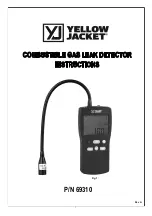
12
SEARCH AND METAL DETECTION
In case there is still interference even after other settings are done (ground setting, iron
audio), it is necessary to turn sensitivity down. As sensitivity setting will affect depth, it
should be done gradually.
Interference Elimination
In case you do not want ferrous metals to be detected, IRON AUDIO button should be
set to the minimum. In this way, device does not produce sounds for ferrous metals in
search. When iron audio is turned right, it will provide a deeper sound to ferrous metals.
If you are searching in areas rich in minerals and would like to detect ferrous metals,
IRON AUDIO is first set to maximum. Then, turned left till iron sound coming from the
ground is not heard anymore. This process will eliminate iron mineral sounds and allow
the device to detect ferrous metals.
Eliminating ferrous metals
When the target is detected, dig the surface by 3–5 cm and check the signal again. If no
signal is received, the target is in the dig part.
If the target is still in the ground, cut the section which you think includes the target
using a sharp tool. This prevents the material to be scattered around and makes it
easier to fill in the hole. Check if the target is in the hole dig. If the target is not in the
hole, place the detector on the ground by maintaining parallel position of the head and
grasp some soil and move it around the bobbin. Make sure you do not have ring,
watch, bracelet, etc. on you. Repeat this action till you find the target. Fill the hole back
when you make sure no more targets are left in the ground.
Digging the target out
As in all metal detectors, the device may not provide 100% accuracy because
metals send different signals depending on their positions, depth, mineral
intensity, conductivity and shapes. For example; rusty sheet or can in the
ground may send gold like signals. In these cases, it is best to dig to find out.
W
ARNING!




































